In 2023, a variety of prehistoric ocean monsters have emerged.
1. Chinese Monster “Born from the Dead”
252 million years ago, Earth experienced the worst tragedy in the planet’s history: the Permian-Triassic extinction event, which led to the disappearance of 96% of marine species and 70% of terrestrial vertebrates.
The ocean monster Hupehsuchus nanchangensis was conceived during that chaotic period.
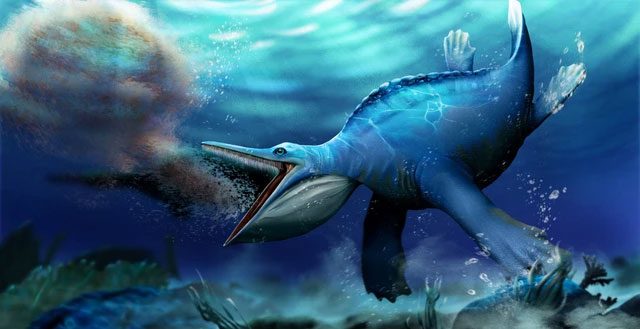
Hupehsuchus nanchangensis – (Image: SCI-NEWS).
A study published in 2023 by the China Geological Survey and Professor Michael Benton from the University of Bristol in the UK has remarkably revealed the unusual characteristics of this creature found in Hubei Province, China, through a well-preserved fossil.
This species is believed to have originated about 3 million years after the mass extinction, during a time when the Earth was still stumbling towards recovery.
It possesses a pelican-like beak, a dinosaur-like body, and flipper-like limbs, belonging to an unknown group of marine reptiles closely related to ichthyosaurs.
2. “Dragon-bodied” Plesiosaur in the USA
The sea monster known as Sarabosaurus dahli unexpectedly appeared in Glen Canyon National Park in Utah, USA, identified as a previously unknown species of plesiosaur. Plesiosaurs were gigantic marine reptiles and top predators of their time.
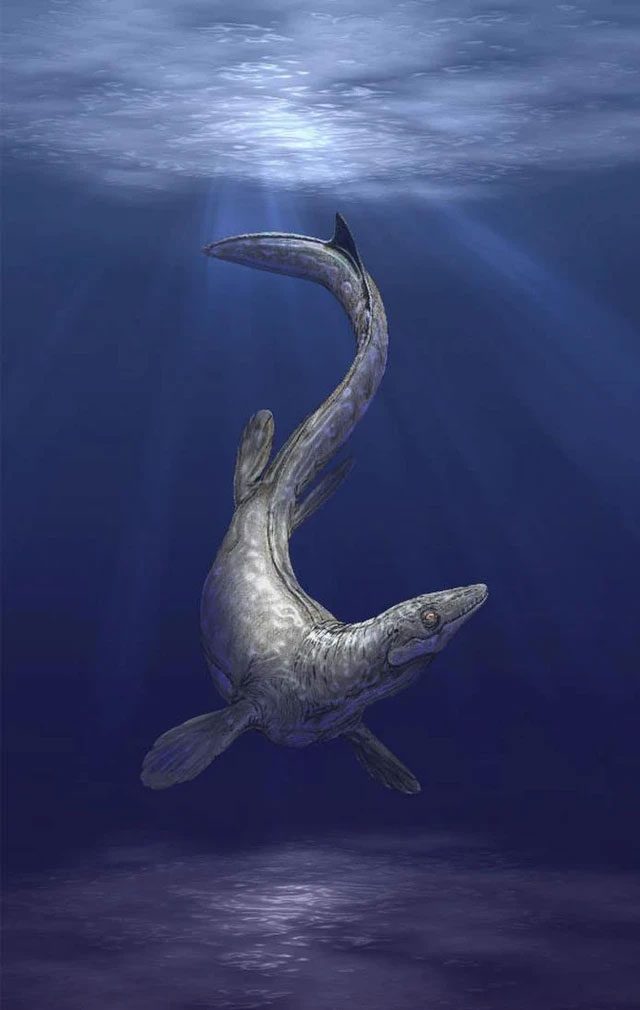
Sarabosaurus dahli – (Image: SCITECH DAILY).
This new specimen is 94 million years old, with a relatively rounded front half similar to other plesiosaurs, but a long, slender rear resembling the body of mythical dragons.
3. The “Ancestor” of Ichthyosaurs
Ichthyosaurs, or ichthyosaurs, were among the most common marine reptiles of the monstrous oceans during the Triassic, Jurassic, and Cretaceous periods.
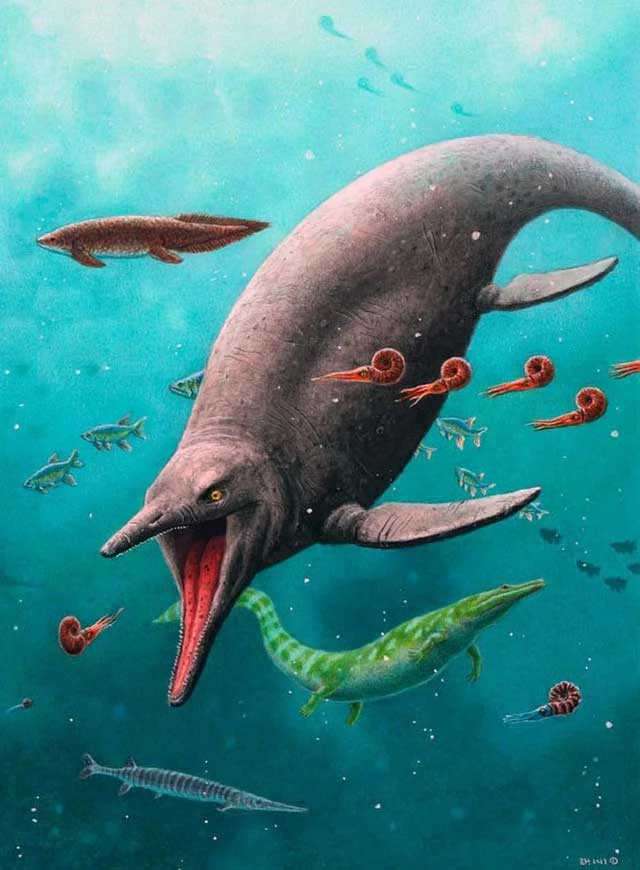
The oldest ichthyosaur species in the world – (Image: SCITECH DAILY).
A well-preserved specimen of vertebrae published in 2023 shows that this species predates dinosaurs by a significant margin and also “rose from the dead,” much like the sea monster from China.
It was uncovered from the Vikinghøgda Formation on Spitsbergen Island in the Arctic, dated to be 250 million years old.
The “Phantom Lord” That Severed a 6m Sea Monster
A Tanystropheus hydroides, a gigantic marine reptile from 240 million years ago, was excavated from the “fossil mine” at Monte San Giorgio, located on the border of Switzerland and Italy. But that’s not the most astonishing part.
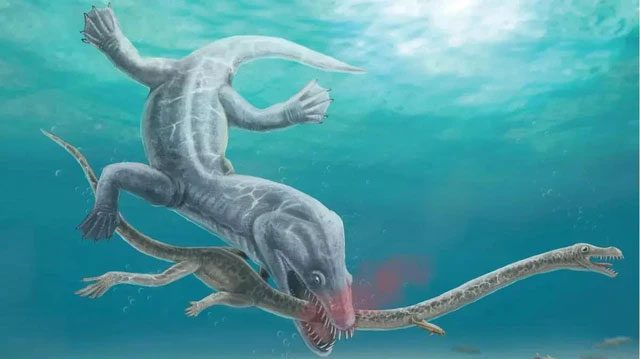
“Phantom Lord” mysteriously slaughtered a giant sea monster – (Image: Stuttgart State Museum of Natural History).
The fossil of the creature was found severed in two, which researchers from the Stuttgart State Museum of Natural History (Germany) believe was due to a fatal bite from an unidentified species.
No matter what killed the Tanystropheus hydroides, it must have been a terrifying “lord of the ocean,” as Tanystropheus hydroides was already 6 meters long and a formidable predator of the ancient seas.
5. “Ultimate Predator of the Jurassic”
It is unclear how the aforementioned “Phantom Lord” relates to the horrifying skull found along the coast of Dorset, England. One thing is certain: both are horrifically unimaginable.
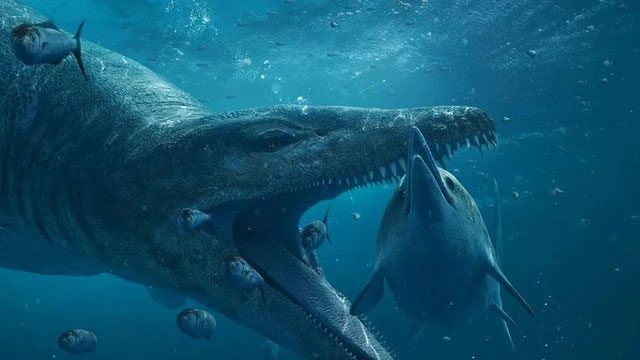
“Ultimate Predator of the Jurassic” still holds many mysteries – (Image: BCC).
In 2023, British scientists discovered and studied a monstrous sea skull measuring up to 2 meters long, which according to paleontologists from the University of Bristol (UK), belongs to an unidentified species.
This gigantic skull still contains 130 teeth, each resembling a sharp, dangerous knife. It is estimated that this creature could reach lengths of up to 12 meters and was extremely dangerous, earning it the nickname “Ultimate Predator of the Jurassic.”


















































